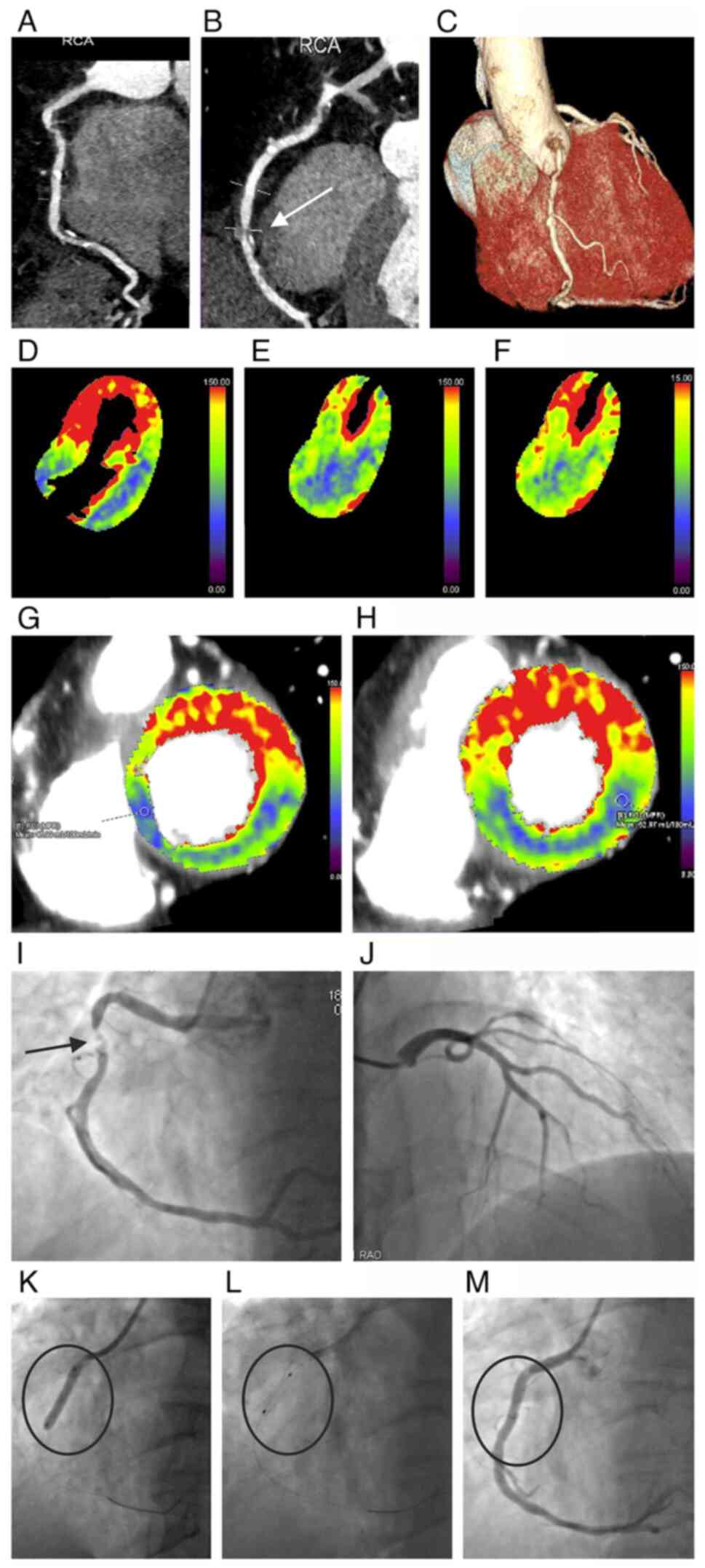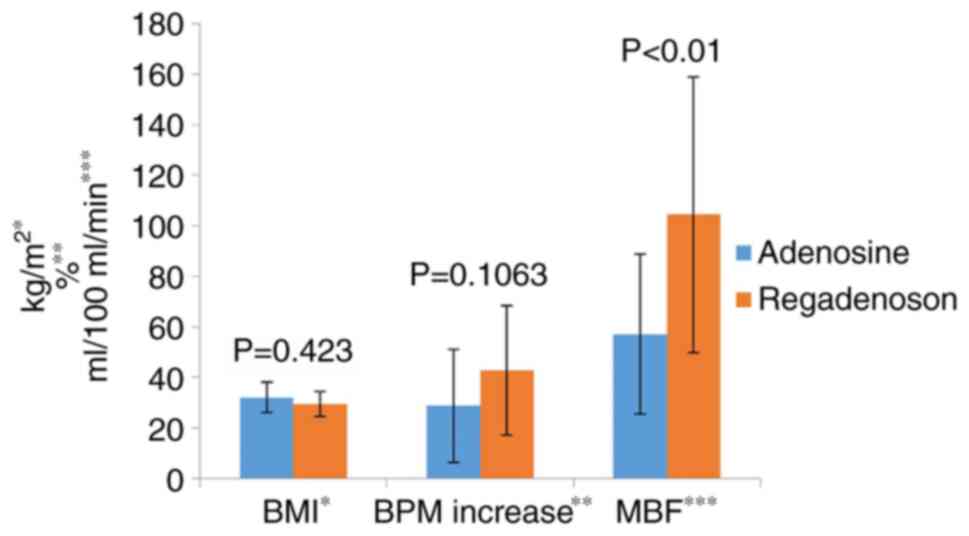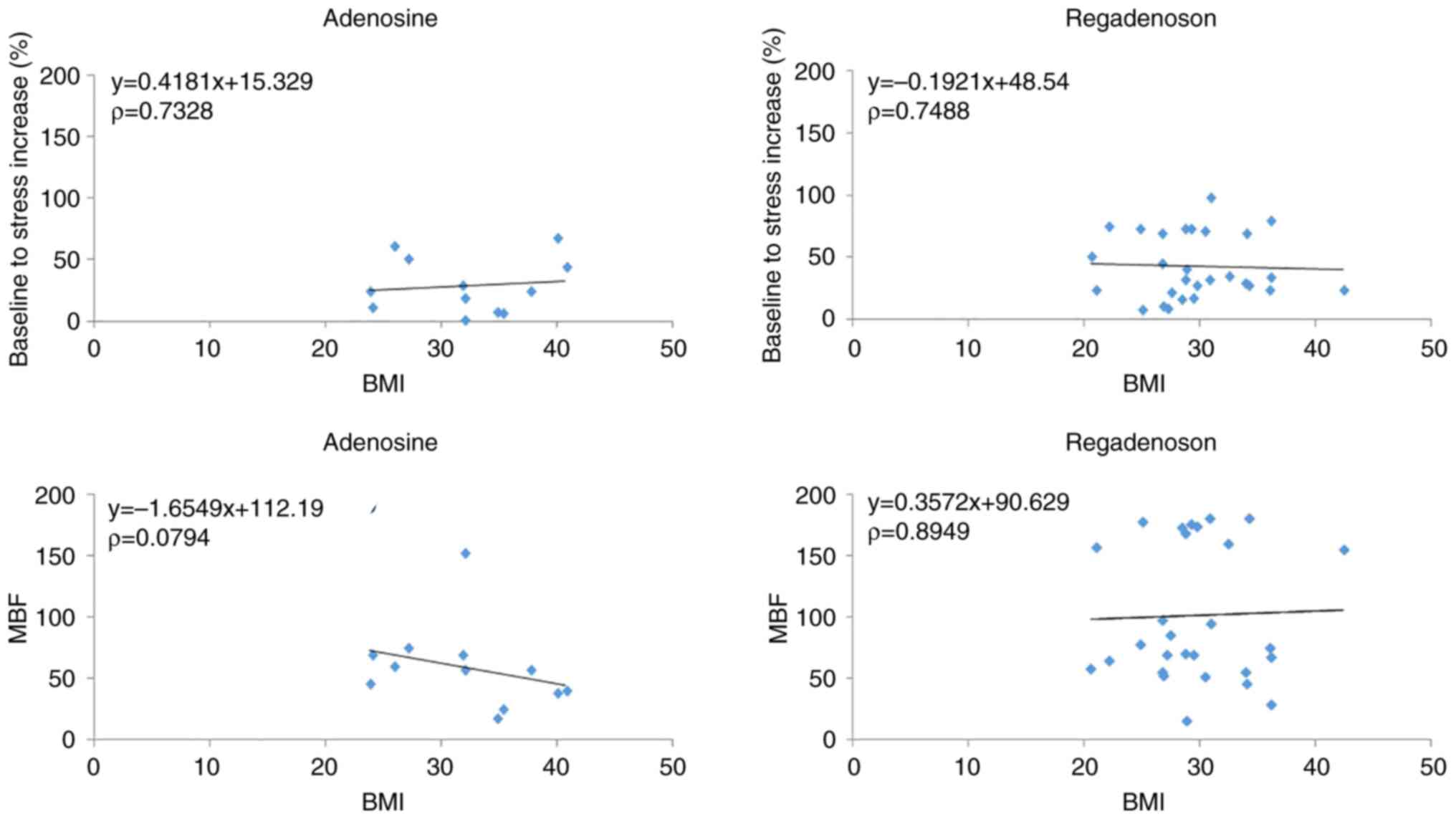|
1
|
Yang L, Zhou T, Zhang R, Xu L, Peng Z,
Ding J, Wang S, Li M and Sun G: Meta-analysis: Diagnostic accuracy
of coronary CT angiography with prospective ECG gating based on
step-and-shoot, Flash and volume modes for detection of coronary
artery disease. Eur Radiol. 24:2345–2352. 2014.PubMed/NCBI View Article : Google Scholar
|
|
2
|
American College of Cardiology Foundation
Task Force on Expert Consensus Documents. Mark DB, Berman DS,
Budoff MJ, Carr JJ, Gerber TC, Hecht HS, Hlatky MA, Hodgson JM,
Lauer MS, et al: ACCF/ACR/AHA/NASCI/SAIP/SCAI/SCCT 2010 expert
consensus document on coronary computed tomographic angiography: A
report of the American College of cardiology foundation task force
on expert consensus documents. Circulation. 121:2509–2543.
2010.PubMed/NCBI View Article : Google Scholar
|
|
3
|
Taylor AJ, Cerqueira M, Hodgson JM, Mark
D, Min J, O'Gara P and Rubin GD: American College of Cardiology
Foundation Appropriate Use Criteria Task Force; Society of
Cardiovascular Computed Tomography; American College of Radiology
et al. ACCF/SCCT/ACR/AHA/ASE/ASNC/NASCI/SCAI/SCMR 2010
appropriate use criteria for cardiac computed tomography. a report
of the American College of cardiology foundation appropriate use
criteria task force, the society of cardiovascular computed
tomography, the American college of radiology, the American heart
association, the American society of echocardiography, the American
Society of nuclear cardiology, the North American Society for
cardiovascular imaging, the society for cardiovascular angiography
and interventions, and the society for cardiovascular magnetic
resonance. Circulation. 122:e525–e555. 2010.PubMed/NCBI View Article : Google Scholar
|
|
4
|
Bamberg F, Becker A, Schwarz F, Marcus RP,
Greif M, von Ziegler F, Blankstein R, Hoffmann U, Sommer WH,
Hoffmann VS, et al: Detection of hemodynamically significant
coronary artery stenosis: Incremental diagnostic value of dynamic
CT-based myocardial perfusion imaging. Radiology. 260:689–698.
2011.PubMed/NCBI View Article : Google Scholar
|
|
5
|
Botvinick EH: Current methods of
pharmacologic stress testing and the potential advantages of new
agents. J Nucl Med Technol. 37:14–25. 2009.PubMed/NCBI View Article : Google Scholar
|
|
6
|
Lette J, Tatum JL, Fraser S, Miller DD,
Waters DD, Heller G, Stanton EB, Bom HS, Leppo J and Nattel S:
Safety of dipyridamole testing in 73,806 patients- the multicenter
dipyridamole safety study. J Nucl Cardiol. 2:3–17. 1995.PubMed/NCBI View Article : Google Scholar
|
|
7
|
Cerqueira MD, Verani MS, Schwaiger M, Heo
J and Iskandrian AS: Safety profile of adenosine stress perfusion
imaging-Results from the adenoscan-multicenter-trial-registry. J Am
Coll Cardiol. 23:384–389. 1994.PubMed/NCBI View Article : Google Scholar
|
|
8
|
Cerqueira MD: The future of pharmacologic
stress: Selective A2A adenosine receptor agonists. Am J Cardiol.
94:33D–42D. 2004.PubMed/NCBI View Article : Google Scholar
|
|
9
|
Hasko G, Linden J, Cronstein B and Pacher
P: Adenosine receptors: Therapeutic aspects for inflammatory and
immune diseases. Nat Rev Drug Discov. 7:759–770. 2008.PubMed/NCBI View
Article : Google Scholar
|
|
10
|
Iskandrian AE, Bateman TM, Belardinelli L,
Blackburn B, Cerqueira MD, Hendel RC, Lieu H, Mahmarian JJ, Olmsted
A, Underwood SR, et al: Adenosine versus regadenoson comparative
evaluation in myocardial perfusion imaging: Results of the ADVANCE
phase 3 multicenter international trial. J Nucl Cardiol.
14:645–658. 2007.PubMed/NCBI View Article : Google Scholar
|
|
11
|
Goudarzi B, Fukushima K, Bravo P, Merrill
J and Bengel FM: Comparison of the myocardial blood flow response
to regadenoson and dipyridamole: A quantitative analysis in
patients referred for clinical 82Rb myocardial perfusion PET. Eur J
Nucl Med Mol Imaging. 38:1908–1916. 2011.PubMed/NCBI View Article : Google Scholar
|
|
12
|
Andrikopoulou E and Hage FG: Adverse
effects associated with regadenoson myocardial perfusion imaging. J
Nucl Cardiol. 25:1724–1731. 2018.PubMed/NCBI View Article : Google Scholar
|
|
13
|
Al Jaroudi W and Iskandrian AE:
Regadenoson: A new myocardial stress agent. J Am Coll Cardiol.
54:1123–1130. 2009.PubMed/NCBI View Article : Google Scholar
|
|
14
|
Johnson SG and Peters S: Advances in
pharmacologic stress agents: Focus on regadenoson. J Nucl Med
Technol. 38:163–171. 2010.PubMed/NCBI View Article : Google Scholar
|
|
15
|
Nous FMA, Geisler T, Kruk MBP, Alkadhi H,
Kitagawa K, Vliegenthart R, Hell MM, Hausleiter J, Nguyen PK, Budde
RPJ, et al: Dynamic myocardial perfusion CT for the detection of
hemodynamically significant coronary artery disease. JACC
Cardiovasc Imaging. 15:75–87. 2022.PubMed/NCBI View Article : Google Scholar
|
|
16
|
Bastarrika G, Ramos-Duran L, Rosenblum MA,
Kang DK, Rowe GW and Schoepf UJ: Adenosine-stress dynamic
myocardial CT perfusion imaging: Initial clinical experience.
Invest Radiol. 45:306–313. 2010.PubMed/NCBI View Article : Google Scholar
|
|
17
|
Cury RC, Abbara S, Achenbach S, Agatston
A, Berman DS, Budoff MJ, Dill KE, Jacobs JE, Maroules CD, Rubin GD,
et al: CAD-RADS: Coronary artery disease-reporting and data system:
An expert consensus document of the society of cardiovascular
computed tomography (SCCT), the American college of radiology (ACR)
and the North American society for cardiovascular imaging (NASCI).
Endorsed by the American College of Cardiology. J Am Coll Radiol.
13:1458–1466 e9. 2016.PubMed/NCBI View Article : Google Scholar
|
|
18
|
Rossi A, Wragg A, Klotz E, Pirro F, Moon
JC, Nieman K and Pugliese F: Dynamic computed tomography myocardial
perfusion imaging: Comparison of clinical analysis methods for the
detection of vessel-specific ischemia. Circ-Cardiovasc Imag.
10(e005505)2017.PubMed/NCBI View Article : Google Scholar
|
|
19
|
Reyes E, Staehr P, Olmsted A, Zeng D,
Blackburn B, Cerqueira MD and Underwood SR: Effect of body mass
index on the efficacy, side effect profile, and plasma
concentration of fixed-dose regadenoson for myocardial perfusion
imaging. J Nucl Cardiol. 18:620–627. 2011.PubMed/NCBI View Article : Google Scholar
|
|
20
|
Dhalla AK, Wong MY, Wang WQ, Biaggioni I
and Belardinelli L: Tachycardia caused by A2A adenosine receptor
agonists is mediated by direct sympathoexcitation in awake rats. J
Pharmacol Exp Ther. 316:695–702. 2006.PubMed/NCBI View Article : Google Scholar
|
|
21
|
Lieu HD, Shryock JC, von Mering GO, Gordi
T, Blackburn B, Olmsted AW, Belardinelli L and Kerensky RA:
Regadenoson, a selective A2A adenosine receptor agonist, causes
dose-dependent increases in coronary blood flow velocity in humans.
J Nucl Cardiol. 14:514–520. 2007.PubMed/NCBI View Article : Google Scholar
|
|
22
|
Namdar M, Koepfli P, Grathwohl R, Siegrist
PT, Klainguti M, Schepis T, Delaloye R, Wyss CA, Fleischmann SP,
Gaemperli O and Kaufmann PA: Caffeine decreases exercise-induced
myocardial flow reserve. J Am Coll Cardiol. 47:405–410.
2006.PubMed/NCBI View Article : Google Scholar
|
|
23
|
Rai M, Ahlberg AW, Marwell J, Chaudhary W,
Savino JA III, Alter EL, Henzlova MJ and Duvall WL: Safety of
vasodilator stress myocardial perfusion imaging in patients with
elevated cardiac biomarkers. J Nucl Cardiol. 24:724–734.
2017.PubMed/NCBI View Article : Google Scholar
|
|
24
|
Cerqueira MD, Nguyen P, Staehr P,
Underwood SR and Iskandrian AE: ADVANCE-MPI Trial Investigators.
Effects of age, gender, obesity, and diabetes on the efficacy and
safety of the selective A2A agonist regadenoson versus adenosine in
myocardial perfusion imaging integrated ADVANCE-MPI trial results.
JACC Cardiovasc Imaging. 1:307–316. 2008.PubMed/NCBI View Article : Google Scholar
|
|
25
|
Rangel MO, Demori RM and Doukky R: Age and
gender as predictors of benefit from aminophylline administration
in patients undergoing regadenoson stress myocardial perfusion
imaging: A substudy of the ASSUAGE trial. Am J Ther. 20:622–629.
2013.PubMed/NCBI View Article : Google Scholar
|
|
26
|
Katsikis A, Kyrozi E, Manira V,
Theodorakos A, Malamitsi J, Tsapaki V, Iakovou I, Voudris V,
Kolovou G and Koutelou M: Gender-related differences in
side-effects and hemodynamic response to regadenoson in patients
undergoing SPECT myocardial perfusion imaging. Eur J Nucl Med Mol
Imaging. 46:2590–2600. 2019.PubMed/NCBI View Article : Google Scholar
|
|
27
|
Golzar Y and Doukky R: Regadenoson use in
patients with chronic obstructive pulmonary disease: The state of
current knowledge. Int J Chronic Obstruct Pulmon Dis. 9:129–137.
2014.PubMed/NCBI View Article : Google Scholar
|
|
28
|
Brink HL, Dickerson JA, Stephens JA and
Pickworth KK: Comparison of the safety of adenosine and regadenoson
in patients undergoing outpatient cardiac stress testing.
Pharmacotherapy. 35:1117–1123. 2015.PubMed/NCBI View Article : Google Scholar
|


















